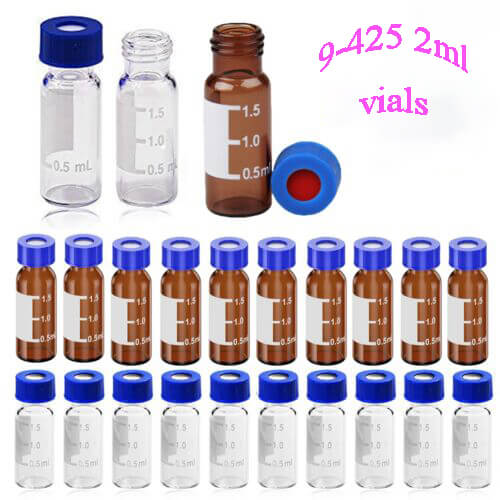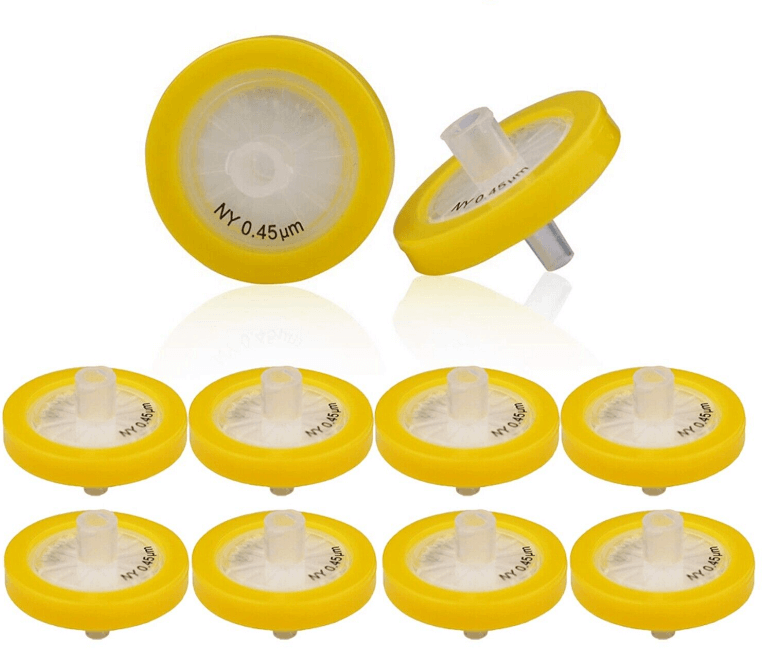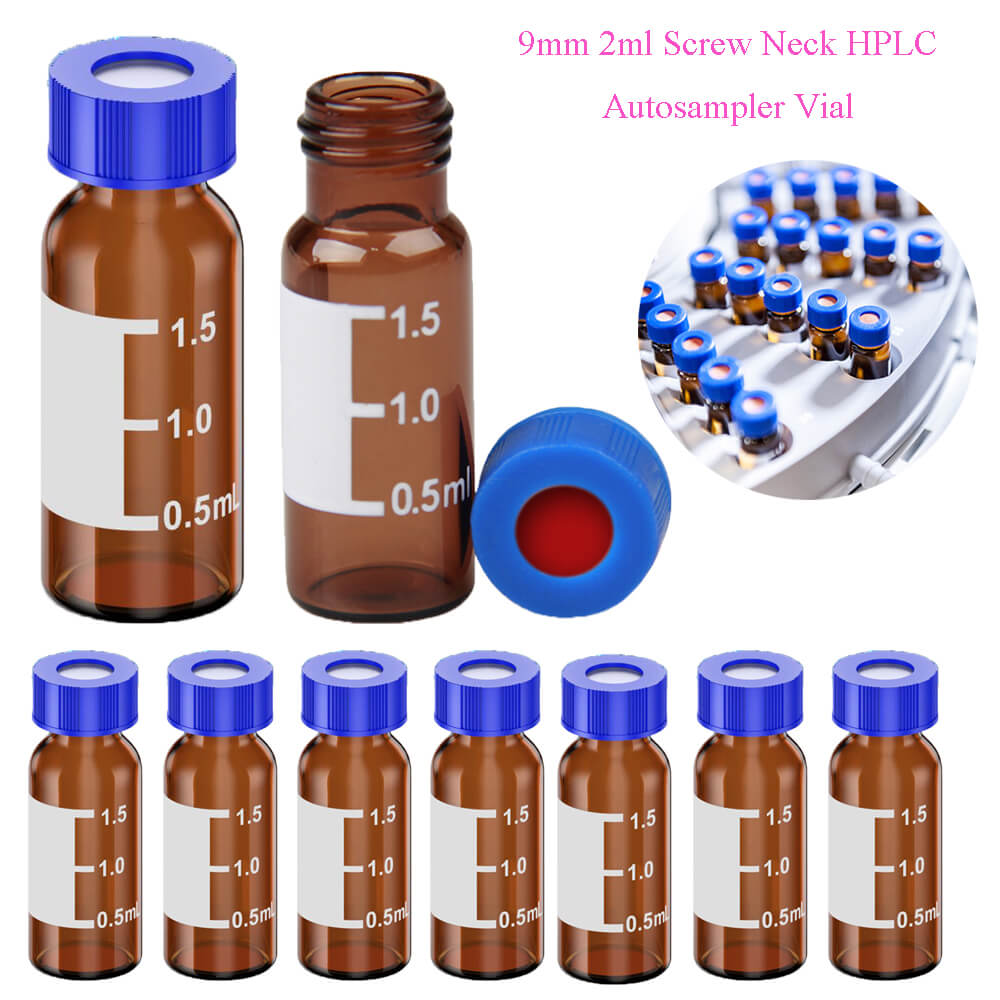HPLC Sample Preparation Solutions
Sample preparation is key but often overlooked step in the chromatography process. Every sample is unique and what works for one preparation may not work as well for another.
Sample preparation is a necessary step in chromatography analysis. Sample preparation is the method of extracting analytes of interest from the sample matrix. This process is necessary for accurate analysis, reduced matrix interference, and maintaining the lifetime of chromatography columns. Matrices can deteriorate the instrument performance and can cause the injector to get dirty.
Understanding the fundamentals of sample preparation for chromatography is an important part of being an expert in chromatography analysis. Without understanding the role of filters, extraction methods, protein crash, and dilute and shoot, your results could suffer.

The Role of Filters
Filtration is a simple method for trapping particles before the sample is analyzed. Reducing particulates in the system maximizes system uptime by protecting the system from clogs and pressure buildup. Some of the most common types of filters include syringe filters, centrifuge filters, and filter vials.
Syringe Filters
Chromatography syringe filters are one-time-use cartridges attached at the end of a syringe that traps particulates from a liquid sample before analysis. These filters are commonly used for HPLC and ion chromatography.
To select the proper syringe membrane filter, you must base the size on the volume of the sample being filtered. Further, you should base the porosity on the size of the potential particles in the sample, and base the membrane type on the solvent and analytes you need to filter.
The main selection criteria for syringe filters are solvent compatibility and porosity. The Chemical Resistance Table lists the most popular solvents in chromatography, along with the compatible membrane types.

Centrifuge Filters
Centrifugation is another technique used for the separation of samples. With centrifuge filters, the sample is transferred to the centrifugation filter basket and subjected to centrifugation. Centrifuges spin the material at high rotation speeds and separate the particulate from the sample and pass through the filter membrane. The centrifuged filtered sample is then collected at the bottom of the tube.
Filter Vials
Filter vials consist of two parts: an outer shell, and a plunger which includes a filter on one end and a vial cap on the other end. Samples are filtered through filter vials by pipetting the sample into the filter vial, inserting the plunger, and pushing the plunger into the vial. This forces the sample up through a filter to separate the particulates from the sample so they can be analyzed. The advantage of filter vials over syringe filters is you are filtering directly into the vial.
Solid-Phase Extraction
Solid-phase extraction or SPE is the technique designed for selective sample preparation and purification before chromatographic analysis. Using liquid chromatography principles to control selectivity, SPE provides the sample cleanup, recovery, and concentration necessary for accurate quantitative analysis.
Several benefits of SPE include the simplification of a complex sample matrix, along with compound purification and reduced ion suppression or enhancement in mass spectrometry applications. The capability to fractionate a sample matrix to analyze compounds by class and trace the concentration of very low-level compounds is yet another benefit.
Liquid-Liquid Extraction
Liquid-liquid extraction or LLE is a common sample preparation technique. LLE involves adding a solvent to a sample that is immiscible, followed by the selective partitioning of analytes versus contaminants between the two phases. For extraction completeness, it is necessary to use an adequate amount of extracting solvent to capture all the analytes from the original sample.
In most cases, a volume of extracting solvent equal to or less than the original sample volume is adequate, assuming reasonable analyte solubility in the solvent. This extracting solvent is added to the sample, and then the two phases are agitated by shaking to bring about substantial physical mixing. After agitation, the phases are allowed to separate. Once the two phases separate, the phase containing the analytes is removed.
Liquid-liquid extraction (LLE) is a reliable sample preparation process. But it is also time-consuming and labor intensive. You can simplify your workflow with minimal changes to your procedure by utilizing Supported Liquid Extraction (SLE). Chrom Tech offers Aijiren Chem Elut S SLE products that deliver reliable, reproducible. Chem Elut S products enable reproducible SLE results with high data quality and sample capacity. Consistent pore and particle sizes allow for batch-to-batch repeatability and uniform flow. Emulsions are also avoided because there is no need for shaking. Compared to liquid-liquid extraction, Chem Elut S reduces analyst-to-analyst variability, improves matrix removal, and requires minimal extraction solvent, which leads to increased analyte concentration.
Protein Crash
Protein crash is the process of removing proteins from a sample. Proteins often damage and clog tiny holes in chromatography columns, making them the main component in need of removal.
This technique uses acetonitrile or methanol to crash the protein out of the solution and a pellet is formed. A proprietary graded filter holds any liquids above it until positive pressure is applied to push the liquid containing the desired analytes (supernatant) through the filter and into a collection plate positioned below.
Protein crash is highly regarded as a rapid clean-up and extraction method for biological samples.

Dilute and Shoot
The dilute and shoot method of sample preparation entails diluting the sample to minimize the presence of salts and matrix effects. After being diluted, they are directly injected into the system. A few benefits of dilute and shoot sample preparation include the requirement of minimal consumables, quick sample preparation, and low costs. Although, if the sample becomes too diluted, it can become difficult to analyze the sample in-depth.
For accurate results and to maintain chromatography consumables, sample preparation is a highly important step to include in chromatography analysis. The fundamentals of sample preparation can be summarized by using filtration (syringe filters, filter vials, and centrifuge filters), understanding extraction methods such as solid phase and liquid-liquid extraction, as well as protein crash and dilute and shoot. Skipping these steps could severely alter your results and cost you extra money prematurely replacing analytical columns.
Conclusion

HPLC is a valuable technique for life science and biopharmaceutical research as it delivers accurate, reproducible results. This accuracy depends on the integrity of the HPLC sample, and the best way to ensure high-quality samples is to start with the best tools. Aijiren’s products are designed specifically for optimal HPLC sample preparation from start to finish. With solutions for ultrapure water, standard preparation, pipettes, tips, and filters, the HPLC sample preparation line accounts for every detail. Automated solutions and software also help to streamline sample preparation to deliver clean samples for clean results.
Back to List
-
 下午4:09Weighing the Pros and Cons of PTFE/Silicone Septa
下午4:09Weighing the Pros and Cons of PTFE/Silicone Septa -
 下午4:05Decoding Vial Discard Guidelines: Ensuring Precision in Chromatography
下午4:05Decoding Vial Discard Guidelines: Ensuring Precision in Chromatography -
 下午5:01Navigating Micro Inserts for HPLC Vials: A Comprehensive Guide
下午5:01Navigating Micro Inserts for HPLC Vials: A Comprehensive Guide -
.jpg) 下午2:02Common faults and solutions of automatic samplers(2)
下午2:02Common faults and solutions of automatic samplers(2) -
 下午5:08Ensuring Sample Integrity: Navigating EPA Storage Vials Stability Guidelines
下午5:08Ensuring Sample Integrity: Navigating EPA Storage Vials Stability Guidelines

